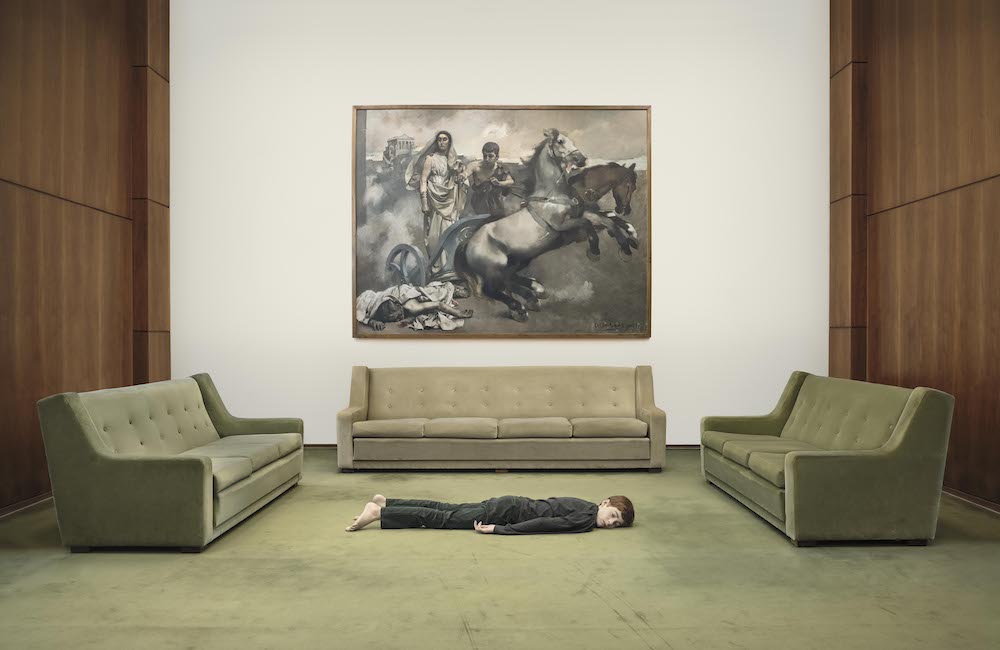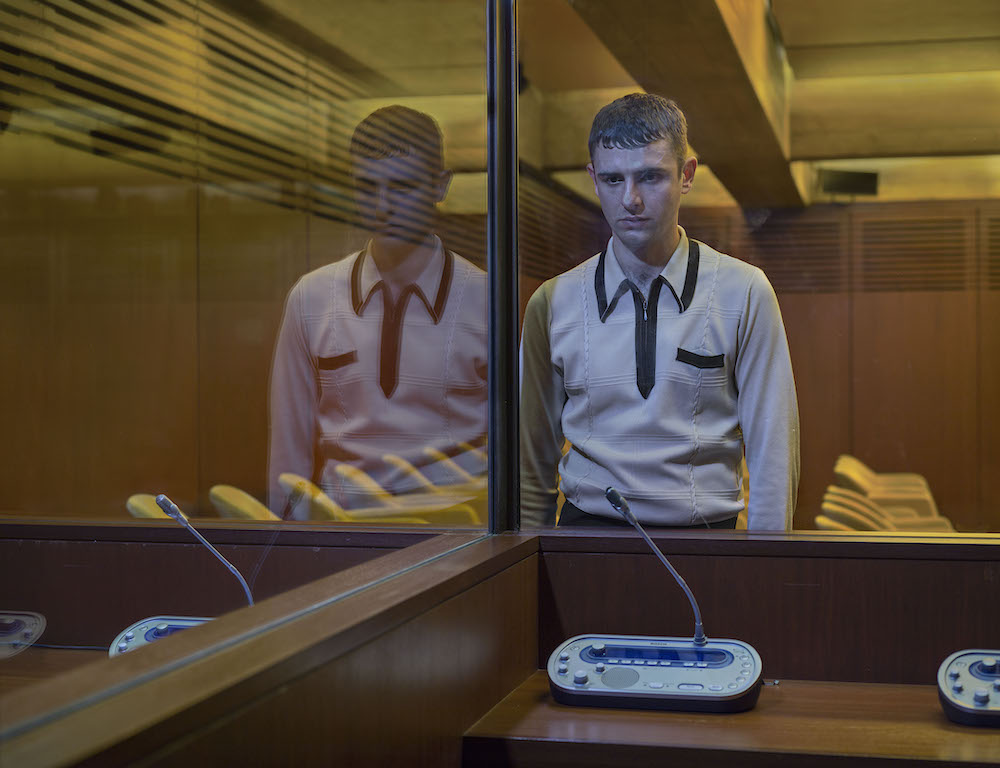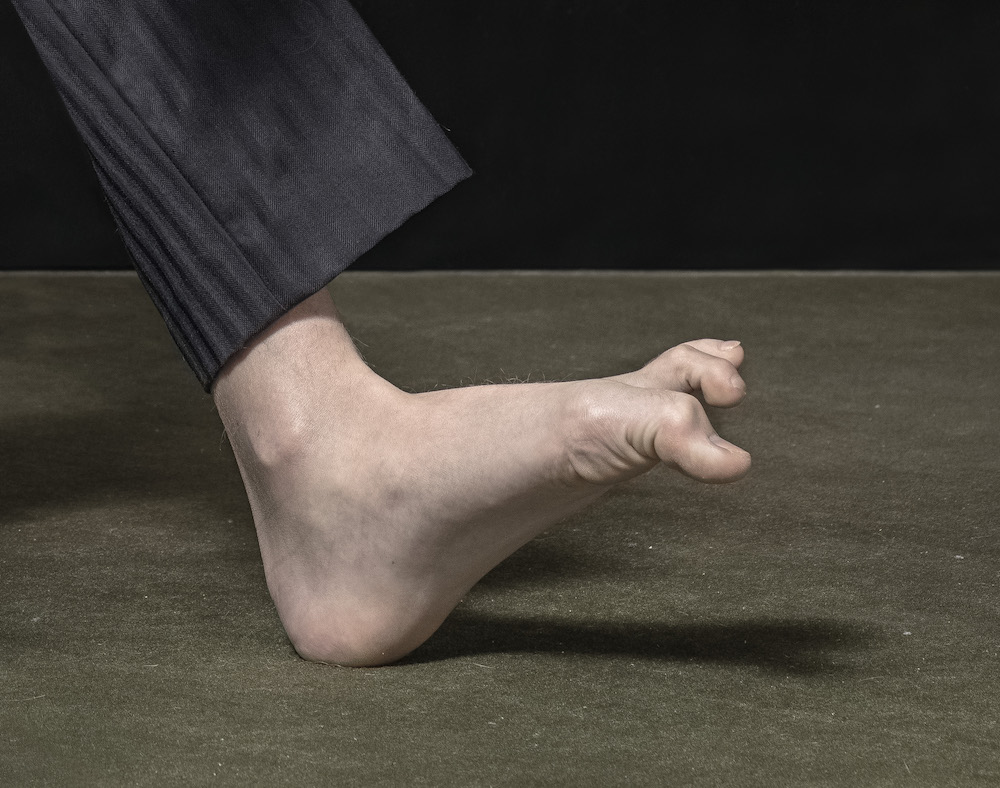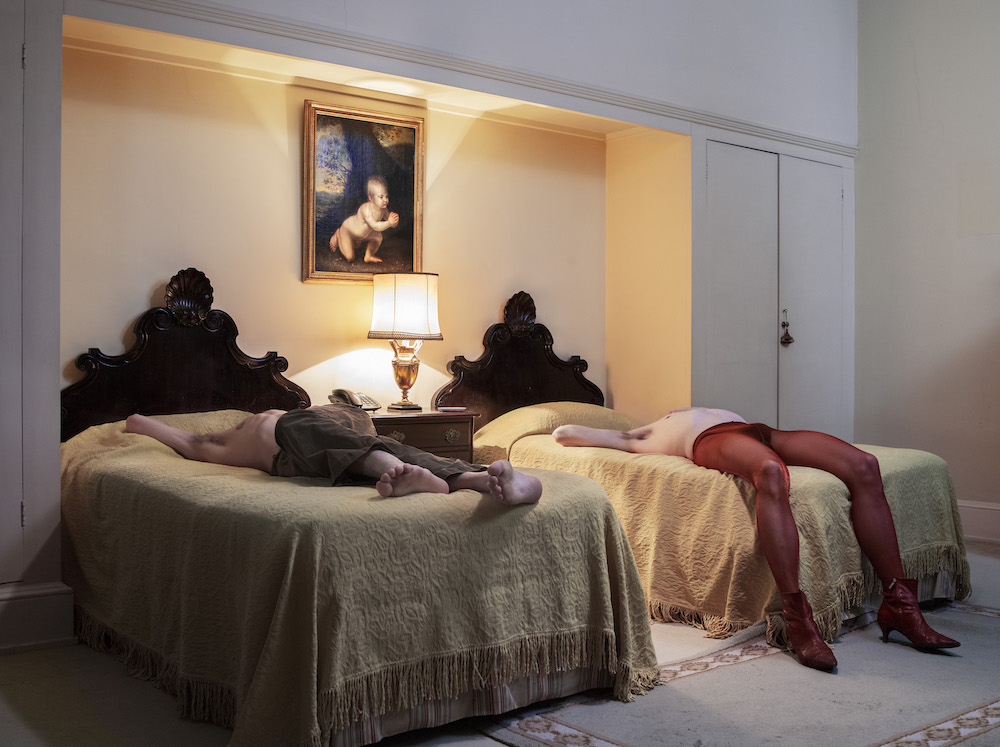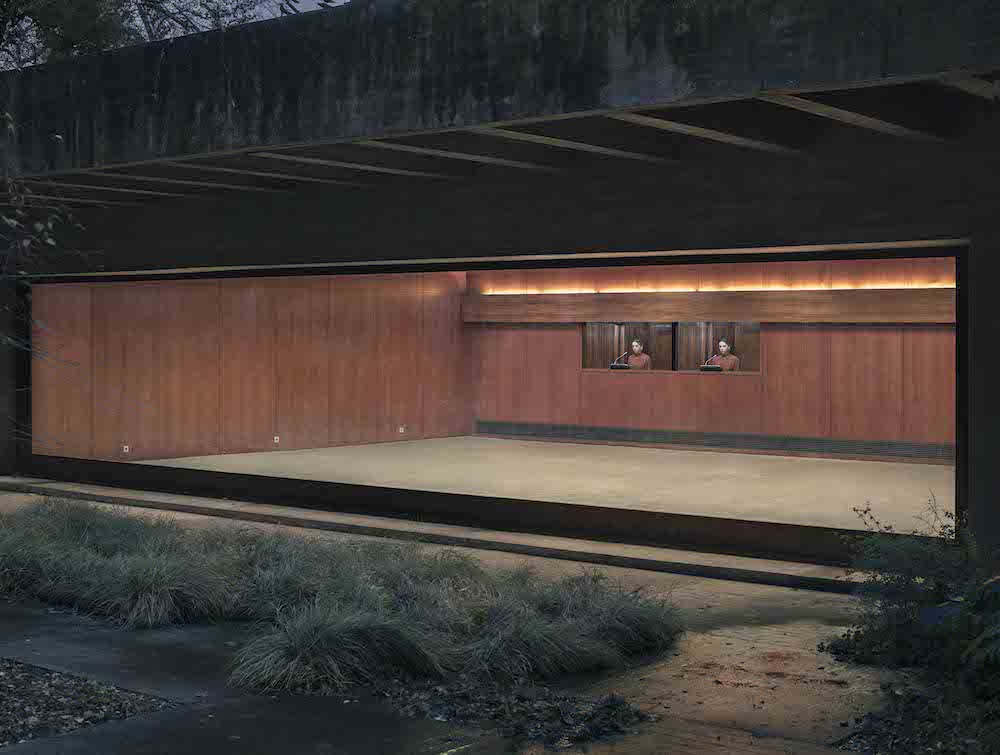Tullia, 2023. All images © Jaime Welsh
In a new series, the Portuguese artist explores existential angst and alienation using his cold, precise choreography
Anxious, foreboding, at times even hostile, the architecture in a typical Jaime Welsh photograph takes on its own mood, as if it were a character in the scene. His unwelcoming, unwieldy compositions share some common features: intense lighting, smooth surfaces, empty spaces. Welsh’s figures stand awkwardly like they don’t belong, their gazes pointed; sightlines are often the focal point of his images, each haunted by loneliness. This is photography driven by the conflicted, troubled relationship between power and beauty.
A boy lies on the ground against a textured backdrop in The Black Door. His pale skin glows, body at rest with arms gently folded. Barefoot, he could be at home, preparing for sleep. Or we might read the scene as a dream snippet, a kind of speculative fantasy treading the thin line between hope and dread. The suggestion of the surreal has been a long running motif for Welsh. Doubled figures stalk his earlier works. Eerie twins in Cabin and the haunting reflection in For Laura (double) underscore a consistently uncertain stance towards reality. In a new picture, The Oval Room, the subject rests their head on the glossy varnished surface, the reflection creating a double that is easy to miss.
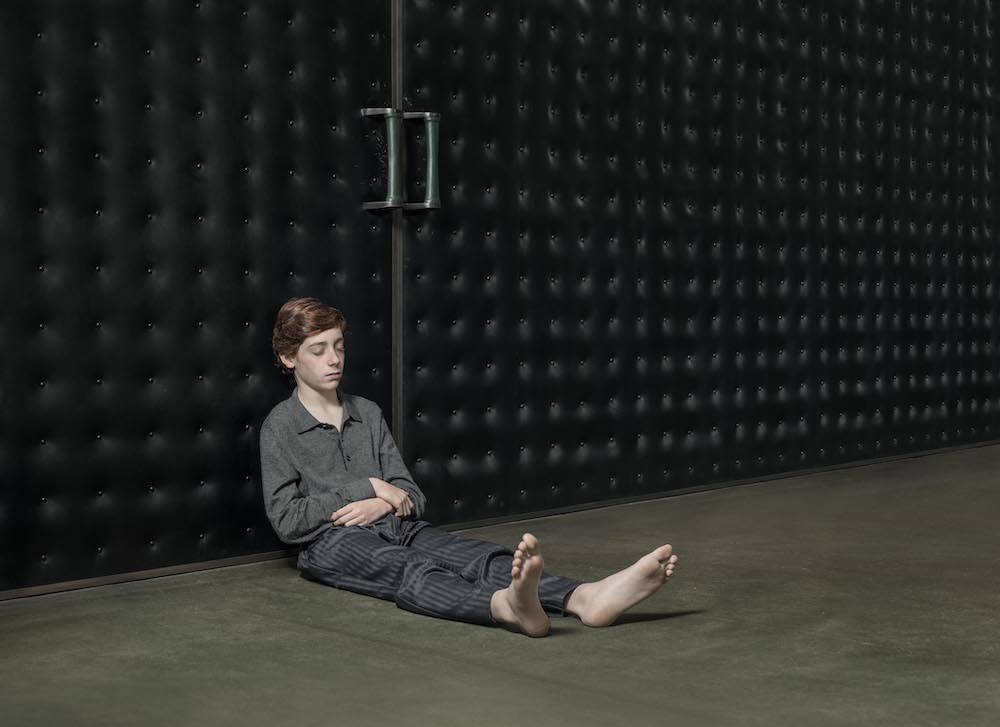
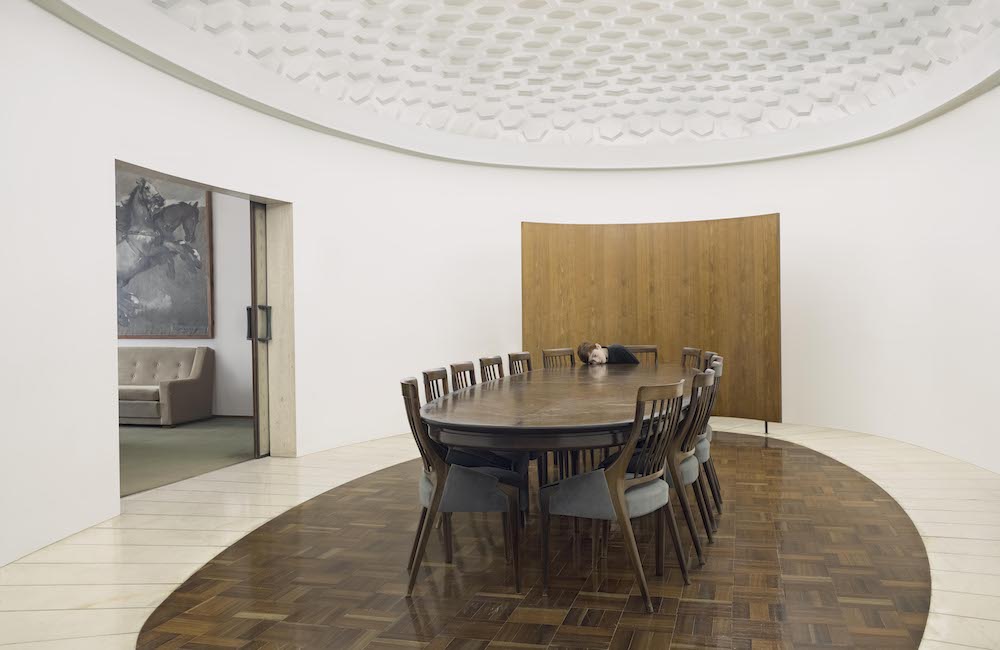
The choices that Welsh makes – from location and composition to an extensive post production process – culminate in layering tension, pushing these introspective moments to breaking point. Take his latest series Inward, on show this month at Ginny on Frederick, London. The images are set against the striking backdrop of the University of Lisbon, built during the dictatorship of António de Oliveira Salazar. Across the pictures, a young boy stands, sits or poses in a lonely space. “I’m drawn to official spaces where architecture and interior design have been used as expressions of power,” Welsh explains.
Inward centres on the boy at the foot of an opulent staircase, accompanied by little more than the gentle glow of the skylight above. Evoking the grandeur of the building lends the images a sense of dread, but also a kind of ugly power. Beauty was a tool to elicit emotion, a “camouflage to mask reality,” Welsh says. Borrowing from the drama of his surroundings carries a murky, ethical burden, as the highly aestheticised nature of authoritarianism was part of its hegemonic claim.
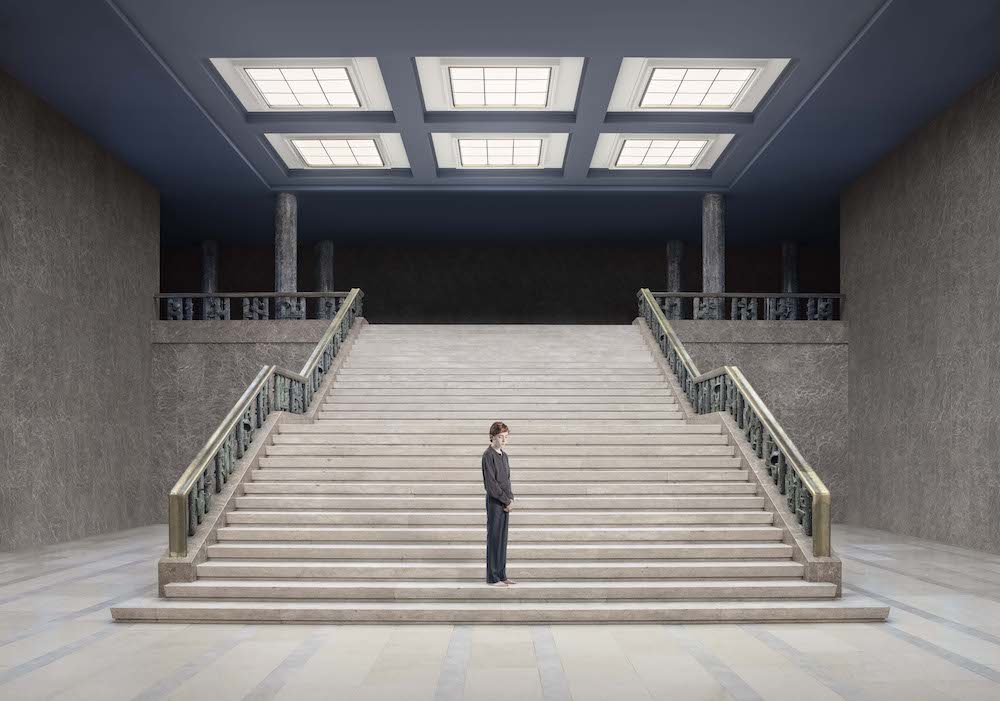
“Growing up as gay within a conservative climate, avant-garde films were my introduction to queer desire and all the alternative possibilities that were not available elsewhere”
Other long-standing influences provide clues as to the origins of Welsh’s digital manipulations. The stark lighting of 17th century Dutch paintings by Pieter Neeffs and Hendrik van Steenwijck can be traced from his earliest works to the present series. “Growing up as gay within a conservative climate, avant-garde films were my introduction to queer desire and all the alternative possibilities that were not available elsewhere,” Welsh says. The theatrical compositions of post-war European filmmakers in the vein of Pier Paolo Pasolini and contemporaries like Michael Haneke loom large. These influences share a visual language – precision with an appetite for ambiguity – yet they occur at dramatic moments through time in Welsh’s work, emerging from a deeply personal place.
Since graduating from Goldsmiths in 2021, Welsh’s work has typically been set within interiors, hermetic sites in which probe his characters’ psyches. His series are sometimes named after these locations, such as The ambassador’s suite. One of the most significant recent developments in his work is the models he works with. Where previous pictures featured friends and family members (which he described as “love infatuations”) casting strangers now allows him to “construct the characters from scratch,” he says, giving him exact control over which emotions are present and, perhaps more importantly, absent from the choreography.

Welsh’s photographic process is painstaking. Originally trained as a painter, extensive research and planning precedes every one of his photographs, with careful post-production required to tweak and manipulate countless details. Furniture and other clutter is erased from the spaces, as are architectural features like windows and support beams. Yet despite this high artifice, imperfections remain. In Dust, we see a close-up of the boy’s arched foot, the surrounding carpet littered with dirt and small hairs. “I’m not sanitising the spaces – I want the images to be like the world, full of beauty and flaws,” he says.
Welsh’s anxious interiors can be read as quiet allegories for queer alienation. “Historically, queer people have had to make their own narratives outside institutional spaces,” he reflects, “which can be profoundly isolating.” The work may not be directly about queerness, but it “rests on a deep feeling of loneliness that is connected intrinsically to it,” he says. Characters navigate interiors as if they’re on the hunt for an existential purpose that is always out of reach. More than anything, they seem lost.

